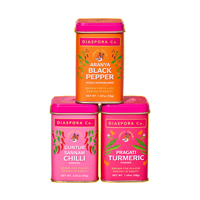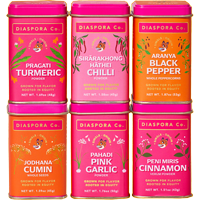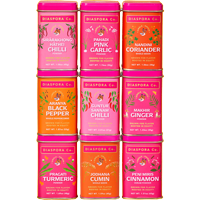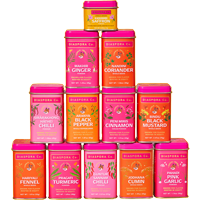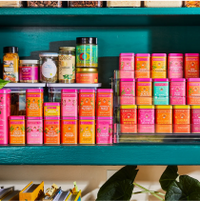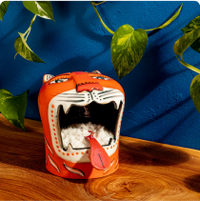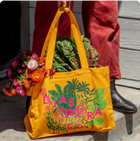
Long before butter chicken took flight, this dish from the by-lanes of Old Delhi captured the city’s imagination. A korma is essentially a meat stew braised in a yoghurt and spices. Nut pastes are also added to give it heft. Like biryani, each region has its own korma and ingredients differ wildly, as do claims of which is more superior. Delhi’s korma distinguishes itself by the use of spices, its floral perfume, and the use of a fried onion paste that acts as a thickener. This is a decadent dish, and sadly you only see it at weddings in Old Delhi, or old establishments in Muslim neighborhoods. Serve it with some tandoori roti, naan, or rice.

Uzair’s Dilliwala Korma (Delhi-Style Chicken Korma)
Long before butter chicken took flight, this dish from the by-lanes of Old Delhi captured the city’s imagination. A korma is essentially a meat stew braised in a yoghurt and spices. Nut pastes are also added to give it heft. Like biryani, each region has its own korma and ingredients differ wildly, as do claims of which is more superior. Delhi’s korma distinguishes itself by the use of spices, its floral perfume, and the use of a fried onion paste that acts as a thickener. This is a decadent dish, and sadly you only see it at weddings in Old Delhi, or old establishments in Muslim neighborhoods. Serve it with some tandoori roti, naan, or rice.
Ingredients
- 4 cups neutral oil, like canola or grapeseed
- 1-2 large red onions, thinly sliced
- 2 tablespoons ghee
- 3 pods Baraka Green Cardamom or Iniya Cardamom
- 7–8 whole Aranya Black Pepper
- 3–4 Kandyan Cloves
- 2 medium Himalayan Tejpatta leaves
- 1 teaspoon Jodhana Cumin
- 2 Wild Cinnamon sticks (2-3 inch long)
- 2 pounds skinless, bone-in chicken pieces (I used 4 thighs and 4 drumsticks)
- Salt, to taste
- 2 tablespoons ginger-garlic paste
- 1–2 teaspoons powdered Kashmiri Chillies
- 1 teaspoon Pragati Turmeric
- 1/4 cup raw cashew nuts, blanched and blended into a paste
- 1 1/2 cups plain yogurt
- 1 tablespoon Nandini Coriander, toasted and powdered
- 1 1/2 teaspoon cumin, toasted and powdered
- 1 teaspoon Garam Masala
- 1/4 Anamalai Nutmeg seed, freshly grated
- 1/8 teaspoon Anamalai Mace, powdered
- 2 teaspoon kewra water (diluted screw pine essence)
- 2 cups water
Methods
- In a Dutch oven or large, heavy-bottomed pot, heat the oil over high heat for 3-4 minutes. To test the temperature of the oil, drop an onion slice into the oil—it should sizzle on contact. Carefully add a handful of onions to the oil and fry, stirring occasionally, until light golden, about 4-5 minutes. Remove the onions with a slotted spoon and transfer to a paper towel-lined plate. Repeat with the remaining half of the onions. (Note– The oil will foam significantly on contact with onions. This is just water evaporating. It is important to do this in a big pot. Do not overcrowd, or the oil will spill over.)
- Once cooled, blitz the fried onions in a food processor with half a cup of water to make the fried onion paste and set aside.
- Heat ghee in a Dutch oven or heavy-bottomed pot over medium heat. Add the whole spices—bay leaves, cinnamon, peppercorns, cardamom, cloves and cumin—and cook until fragrant, about 1–2 minutes. Add the chicken, stirring to coat in the toasted spices, increase the heat to high and cook to seal the chicken, about 2–3 minutes.
- Add the ginger-garlic paste and give everything a good toss. Lower the heat to medium, layer in the red chilli powder and turmeric, and cook for 1–2 minutes.
- Add the cashew paste and mix, cooking for another 4-5 minutes. If the mixture looks too dry, add a few tablespoons of water.
- In a medium bowl, combine the yogurt with powdered coriander, cumin and garam masala. Lower the heat, add the yogurt mixture and mix well to avoid the yogurt from splitting. Cover and cook until the oil separates, about 6–8 minutes.
- Uncover, stir in the reserved fried onion paste and about two cups hot water, mix and bring the mixture to a gentle boil. Simmer, uncovered, until the sauce comes together, about 2–3 minutes.
- To finish, stir in the nutmeg, mace and kewra water. Cover, turn off the heat and let sit for 10–15 minutes, allowing the finishing spices to absorb into the korma.
- Serve hot. If serving the next day, refrigerate overnight and heat in a deep pot. Add hot water to bring it together. The korma can also be made a few hours or a day in advance and reheated similarly.



